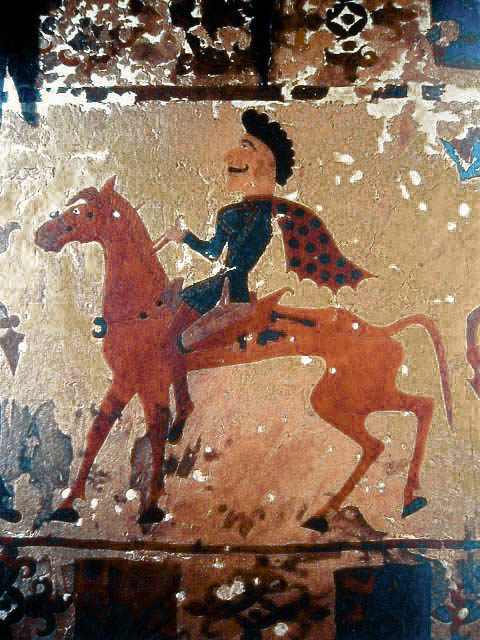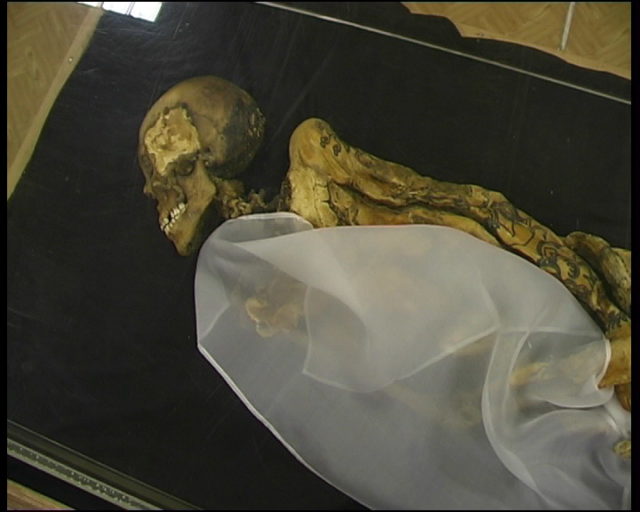In 1949, two mummies were excavated from graves in the Altai Mountains; they were thought to be a local chieftain and his wife or concubine from the Pazryryk culture.
Their remains now rest in the Hermitage Museum in St. Petersburg and are very well preserved from being encased in ice for thousands of years. The male is between 55 and 60 years of age and the woman would have been ten years younger.

Using a Siemens SOMATOM Emotion, the bodies have been scanned to create tomographic images. Tomographic imaging, in this case, uses a CT scanning machine to take images of the bodies, section by section. Once these are entered into a computer, a 3D image can be created of the insides of the bodies as well as the outsides. It’s like a form of autopsy without the need for incisions, and this is the first time the museum has used this technology.
The data from the scans will be studied by a range of specialists that include biological anthropologists, radiologists, and archaeologists. They are hoping to establish the cause of death for the couple and also to be able to see further into the mummification technique that was used. Also, they are hopeful they can use the images to recreate what these people would have looked like in life.

The graves themselves have been plundered many times since prehistoric times, but fortunately, two carpets were left behind with the bodies. These carpets are the oldest ever found in the world so far. The images on one are very clear; they were created from felt and appliqued with multi-coloured images of people and horses. Some of the sewn figures are a meter in height. The second carpet is pile-woven and is one of the earliest of its kind. It was created in yellows, creams, reds, and browns, and contains some of the same imagery found on the felted carpet.
In the grave mound, there was a wooden burial chamber that had been covered in logs. The male and female were together in one wooden sarcophagus. Both bodies had been mummified in the same manner, with holes drilled into the skulls and internal organs removed through an abdominal slice. Also, all the muscles had been removed, leaving only skin and bones; the forms of the bodies were then reshaped using a stuffing made of horsehair. Any incisions made on the bodies had been sewn closed.

The male in the burial mound has various tattoos that are of interest to scientists. On his left shoulder is depicted a feline predator, and on his right shoulder, there is a horse. On his right forearm is what looks like an Asiatic wild ass or horse, and a predator that has a striped tail. Because of skin folds, the tattoos can’t be seen in full. On his hands are images of birds and on his legs below his knees, are groups of ungulates. The woman has a predatory bird on her left arm, shown killing what looks to be a deer, and on her hand is a rooster, The Siberian Times reported.
With the bodies, the archaeologists also found sheep and goat skins, traces of an incense burner, and broken shards of pots. Nine horses were guarding the burial chamber – all geldings and all complete with harnesses and saddles. They were decorated with wooden figurines of lions, griffins, and deer. There is also a disassembled wooden chariot in the grave, thought to have been a part of the funeral rites.
